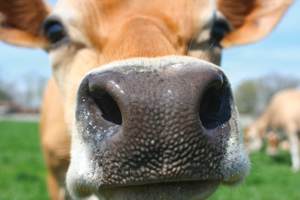Lactose is a natural sugar found in dairy foods. It is digested in the bowel by an enzyme called ‘lactase’. People with lactose intolerance don’t have enough of this enzyme.
 Symptoms of lactose intolerance can occur some time after eating and include:
Symptoms of lactose intolerance can occur some time after eating and include:
- Abdominal discomfort or pain
- Bloating and wind
- Diarrhoea
About 6 % of Caucasian Aussies have lactose intolerance but rates are much higher in people of Asian, African and aboriginal descent.
A simple test is to drink a glass of milk or have a lactose-free week and monitor your symptoms. If you are still not sure see your GP as these symptoms can also be caused by many other medical conditions and food sensitivities such as the fat in milk, caffeine and certain other dietary sugars.
The diagnosis of lactose intolerance can be confirmed with a simple test to measure the level of hydrogen in your breath. This is raised in people with lactose intolerance.
Can I still eat dairy foods?
Most people with lactose intolerance can still enjoy dairy foods which are an important source of calcium. However, the amount may need to be reduced and spread over the day.
- Most people can drink ½ cup of milk without symptoms. Milk on cereal or in tea is fine.
- Full cream milk is better tolerated than skim milk. Alternatives are calcium-enriched soy or rice milk and milk with pre-digested lactose.
- Hard cheeses and yogurt are low in lactose and can generally be eaten safely.
- Calcium-enriched soy custard, soy ice-cream and soy yogurt are alternatives. Other lactose-free foods are also available.
- Lactase enzyme is available in drops and tablets from pharmacies to take with meals.
Further Information
- The Gut Foundation
- Speak with your doctor
Disclaimer:
Please note this information was correct at time of publication.
For up to date information, speak to your doctor.


